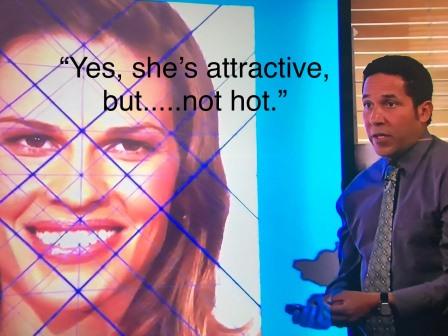What Does the Golden Ratio Have To Do With Feng Shui?
The golden ratio can be used as a design tool in Feng Shui, which is the ancient Chinese traditional practice of using energy to change how we interact with our environment. The Golden Ratio is used in design and math, and it’s used for how things should look.
Below, we’ll dive deeper into the golden ratio and Feng shul and discuss how the two go together. Then, we’ll give three tips on using the golden ratio and Feng Shui in your home.
What Is the Golden Ratio in Feng Shui?
If you’ve just gotten into home design, you might be overwhelmed with all the information available. Different eras of style, design, furniture, and spiritual practices surround the home you create.
The golden ratio in feng shui creates balance in the energy flow that it aims to support. The ratio can help designers decide the optimal number of objects in space, pictures on a wall, or furniture in one area.
Feng shui has more to do with energy and the flow of a room, but the golden ratio can support the design aspect.
Feng Shui and the golden ratio aren’t interchangeable, but they aren’t mutually exclusive. One can be used without the other, and they both exist separately. However, some designers like to use both methods within their work.
Both concepts combine to support the overall go of a room design that has optimal energy and an aesthetically appealing design.
Feng Shui Is the Cultivation of Chi in a Space
Feng Shui is an ancient Chinese practice, with origins possibly dating back to 4000-6000 years ago. Using Feng Shui can help balance a space’s “chi,” which means energy, and make it a more liveable and positive space by arranging the furniture and objects within a room intentionally.
Chi is the “life force” of energy around us, which can affect what comes into our lives, how we interact with people, and how we interact with the space around us. You can get a book, take a course, or call a Feng Shui expert to help you cultivate a space with more energy flow.
You may have heard of random Feng Shui rules here and there, like how curves are more beneficial to the workspace, and you should never have your bed in front of the door. The study of Feng Shui is complex, and cultivating beneficial energy will take lots of research and observation on your end.
The Golden Ratio Can Be Used in Design
Divine ratio, the golden shape, and golden mean are all names the golden ratio also goes by.
The golden ratio is a mathematical concept used in design and mathematics alike, as the concept has been used in art, design, and architecture. The golden ratio in nature can be found in shells and rocks.
Architects try building with the golden ratio in mind if they’re going for aesthetic appeal. Investing with the golden ratio can help a building or art piece become more appealing to investors.
The ratio has also been quite popular in the media.

Who could forget the way Oscar on The Office used the golden ratio on a face during the Hilary Swank debate, or that all of the clues in the Da Vinci Code that led back to the golden ratio? If you can’t quite recall the golden ratio from math, it’s essentially the concept of the irrational number phi, which is having things in a ratio of 1:1.618.
This video helps explain the mathematical concepts behind the golden ratio:

Using the golden ratio to arrange furniture or design spaces has been a widespread architecture practice. Many architects and designers use the “rectangle” concept to utilize the golden ratio. Essentially, by not having things in “perfect” balance, such as having half of the room look one way and half of the room look another, using a 1:1 ratio, but instead using the 1:1.618 ratio. This creates the divine balance. To use the golden ratio, you can find a perfect square of space and add more of the furniture or attention to the space’s rectangle. It’s also used in color theory to divide the colors in a room in ratio.
For example, if you use one color in 60% of the room and another in 40%, rather than doing a fifty-fifty scenario, you are using the golden ratio. Additionally, you can use the golden ratio to balance colors or textures.
Golden Ratio and Feng Shui
Using Feng Shui can bring many benefits into your life. It can help with productivity, abundance, romance, and friendships. Investing in the golden ratio and the spatial configuration of your home can make your home more pleasing to be in but it is not strictly speaking traditional Feng Shui.
The golden ratio in terms of feng shui can help achieve the balance of energy and symmetry. You can use the golden ratio in collaboration with feng shui concepts, as the two aren’t dependent on one another.
However, using both simultaneously could help you achieve an equally aesthetically pleasing and productive space within your home and office.
You can use the golden ratio in feng shui by finding places in your home that can benefit from a shift in energy and the ratio. You can use the golden ratio in design by finding the perfect square in your kitchen, dining, or living room and putting the most energy into that rectangle. You can also find the balance of Feng Shui using the golden ratio.
Like this article? Tap to share
Artistic Alchemy: Harnessing the Golden Ratio's Creative Magic
In the quest for aesthetic perfection, the Golden Ratio emerges as an enduring symbol of harmony and beauty. Our exploration of this divine proportion illustrates its pervasive presence in art, architecture, and nature, serving as a timeless guide for design and composition.
The creation of symmetry and energy balance are practical uses of the golden ratio in Feng Shui practices. The concepts can be used in tandem but aren’t mutually exclusive to design. The golden ratio and Feng Shui are used to intentionally make a space more aesthetically pleasing and change its energy flow.
You can learn how to use both on your own or call in a professional to help you change your space.
Feng Shui Resources
Learn the Ancient Chinese Arts of Feng Shui, Lunar Chinese Astrology, and Solar Chinese Astrology with Dean’s Comprehensive Bundle!
Get everything you need to start learning these ancient arts in one convenient bundle. This bundle includes detailed course notes and examples covering everything from the basics of Feng Shui to the more advanced concepts of Lunar Chinese Astrology and Solar Chinese Astrology.
They are clear, concise, and easy to follow, especially for beginners. You’ll learn everything you need to know to improve your life with the help of these ancient arts.
Limited time offer: Get a $150 bundle discount ($747 down to $597) when you purchase all three courses today!






One thought on “What Does the Golden Ratio Have To Do With Feng Shui?”
Αn interesting discussion is worth comment.
I do believe that you should write more about this subjeсt matter, it mіght not be a taboo matter but usualⅼy people do not
discuss such subϳеcts. To the next! Kind reցardѕ!!